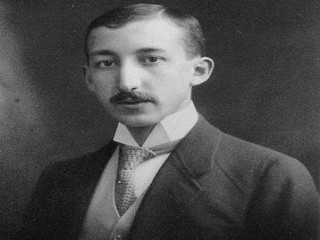
George De Hevesy biography
Date of birth : 1885-08-01
Date of death : 1966-07-05
Birthplace : Budapest, Hungary
Nationality : Hungarian
Category : Science and Technology
Last modified : 2011-05-24
Credited as : Radiochemist, pioneer of isotope labeling, co-discoverer of the element hafnium
The Hungarian chemist George Charles de Hevesy was a pioneer of isotope labeling and co-discoverer of the element hafnium.
George de Hevesy was born in Budapest on Aug. 1, 1885. He studied at Freiburg, Zurich, and Karlsruhe and in 1911 joined Ernest Rutherford at Manchester. His assignment there, to separate radium-D from lead, proved impossible, because radium-D, as was later demonstrated, actually comprises isotopes. Yet the 2 years were not wasted, for Hevesy gained valuable technical experience in the new field of radiochemistry. In 1913 he left for Vienna to join F. A. Paneth, whose experience with radium-D had been similar. They studied the exchange between radioactive and nonradioactive lead atoms, showing that, for all ordinary processes, the chemical and physical behavior of these atoms was identical. Also, by using radioactive (labeled) samples to determine the solubilities of various lead salts, they introduced the technique of radioactive tracers.
In 1920 Hevesy moved to Niels Bohr's institute at Copenhagen, where his attention was directed to the possibility of separating isotopes. In 1922 Hevesy, working with J. N. Bransted, effected a partial separation of the isotopes of mercury by repeated fractional distillation; he had similar success with chlorine and potassium. Hevesy then joined D. Coster in a search for missing element number 72. In examining zirconium minerals they found six unaccountable lines in x-ray spectra and attributed them to the new element, which they named hafnium. Hevesy began using radioactive isotopes as tracers: he studied the absorption of lead by the bean plant (1923) and the distribution and elimination of bismuth injected into rabbits (1924). These were the earliest applications of tracer techniques to biological problems.
In 1926 Hevesy moved to the University of Freiburg, where he developed the use of x-ray fluorescence for mineral analyses and began tracer experiments with stable isotopes. With some deuterium-enriched ("heavy") water, received as a gift from its discoverer, H. Urey, Hevesy studied water exchange between a goldfish and its surroundings, and within the human body. He showed that the human body retains water molecules much longer.
Political pressure compelled Hevesy to move again in 1934, and he returned to Copenhagen. There biology dominated his research, as the recently produced radiophosphorus had become available for studies on metabolism. He examined the rates of exchange of phosphorus in plants, yeast cells, and animal organs, as well as the excretion of phosphate and its exchange between plasma and corpuscles, and the effects of x-rays on the metabolism of malignant tumors.
Aware of the growing hostility of the Nazis, Hevesy escaped to Stockholm in 1944. There he continued his biological tracer work with much success, including studies on the formation and fate of red corpuscles in the blood. He was awarded the Nobel Prize in chemistry in 1944 and for another 20 years made further explorations in the field that he had pioneered. In 1959 he received the Atoms for Peace Prize. Hevesy died in Freiburg on July 5, 1966.

















